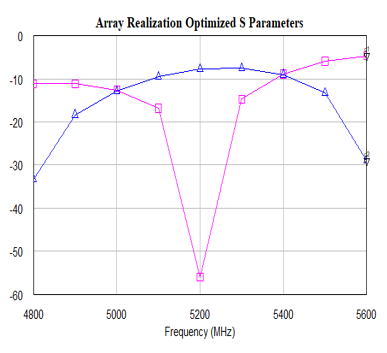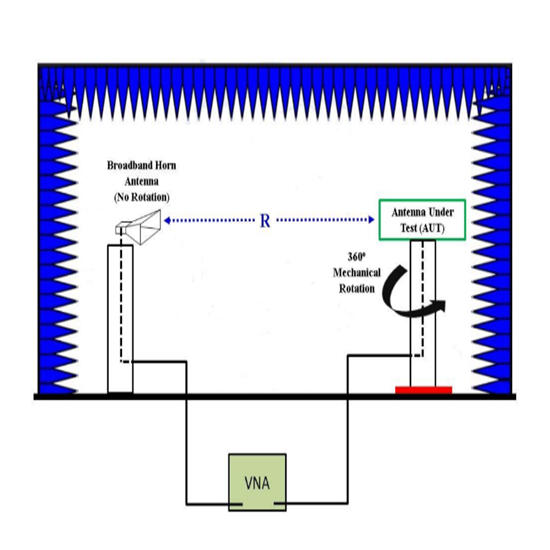Microstrip Patch Antenna

The objective of this project was to design a 4-element microstrip patch linear antenna array operating at 5.2 GHz. The design comprises a 4-element patch array with a microstrip feedline network, matched to a 50-ohm input port. Various radiation patterns were measured and analyzed to evaluate the antenna's performance. The design process began with hardware and software preparation. RT/Duroid 5880 was selected as the substrate material, and AWR Microwave Office along with MATLAB was used for simulation and validation. The initial step involved designing a single microstrip patch element, which was replicated four times to form the array. Subsequently, the microstrip feed network was developed, and all components were integrated into a final layout for fabrication.
The entire design process, including simulation, refinement, and optimization, was conducted in AWR Microwave Office. The first step was designing the individual radiating element, which was then duplicated to form the array. The microstrip feed network was similarly simulated and optimized. MATLAB was used to validate critical calculations during this stage. After completing the optimization process, the final design was consolidated into a single copper layout using AWR software. The design was then exported as a Gerber (.ger) file for fabrication.


The final implementation phase involved testing the antenna array using a Vector Network Analyzer (VNA) and measuring radiation patterns in an anechoic chamber. Return loss was first measured by connecting the array to the VNA. Next, the array was aligned with a radiating horn antenna in the anechoic chamber. Using a mechanical rotating device, data for all possible polarization states were collected to ensure measurement accuracy. When the polarizations were matched, the results confirmed the antenna performed as designed.
The design, simulation, and testing of the 4-element microstrip patch linear antenna array were successfully completed. The integration of AWR Microwave Office and MATLAB proved effective in optimizing the design and ensuring precision in the feed network and radiating elements. Laboratory measurements validated the antenna's performance, demonstrating expected results in return loss and radiation patterns. This project highlights the feasibility of designing compact and efficient microstrip patch arrays for high-frequency applications for adaptation in wireless communication systems.
